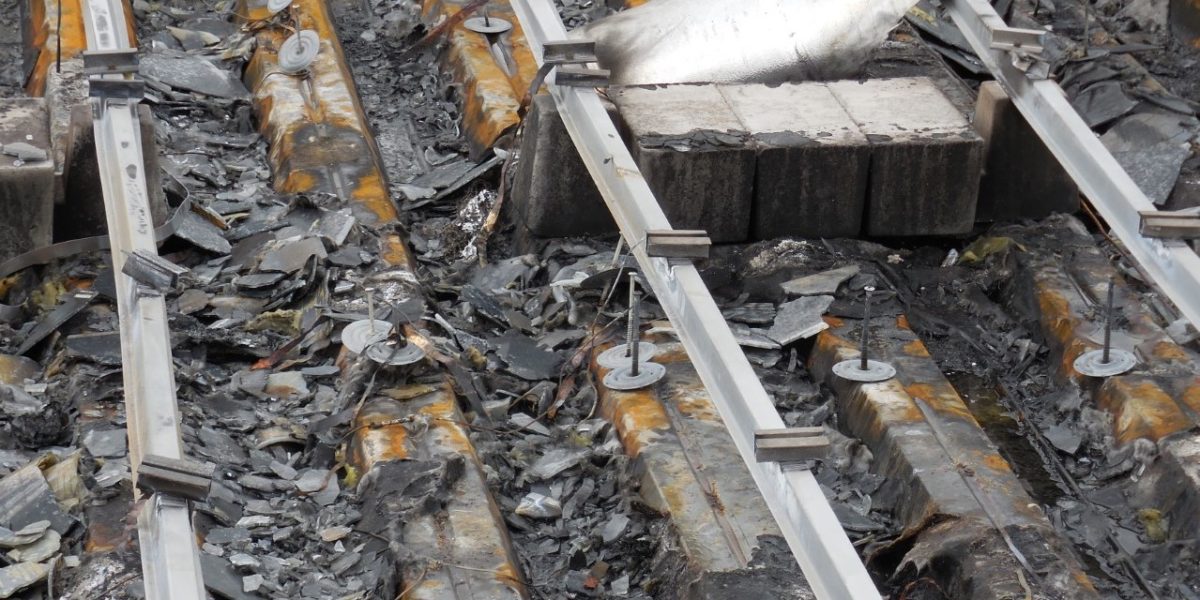From pv magazine USA
PV system fires have a tendency to strike a nerve within the industry. While rare compared to other system disaster events, such occurrences always garner considerable attention.
The issue with solar system fires is how little is known about them. Questions have lingered for years as to what the common causes are, where system failures are occurring, and how often these failures could happen. These questions are the same ones being pursued by Dr. John R. Balfour, president of High Performance PV, and Lawrence Shaw, chief solar systems engineer at Higher Powered, LLC.
To Balfour and Shaw, the most clear and pressing issue with preventing PV system fires is how little information is kept on them. All reported fires in the country are tracked by the U.S. Fire Administration (USFA) using data given by local fire departments. However, when a solar system is determined to be the cause of a fire, that’s as deep as the reporting goes, with no exploration into specific failures or causation. Furthermore, if a responding fire department doesn’t have solar photovoltaics listed as an option in their reporting systems, it gets filed to the USFA miscellaneously.
As it stands, solar system fires are underreported, and sometimes not at all. Available information is dated and specific causations remain a mystery.
Faulty hardware, aging components, and improper installation can be seen as a poor reflection on the industry at large. But Balfour says that this is an inconvenience that must be overcome to address a larger industry issue.
“Almost all of these issues are quite controllable,” said Balfour. “And that control goes back to having accurate shared information, i.e. component and system data.”
Balfour and Shaw came across case studies in Japan and Britain of solar system fires. Most of these fires were caused by aging and failing system components, and a significant number of failures were attributed to components greater than or equal to seven years of age.
Typically, blame is often attributed to improper installation. However, small case studies are not enough to rule out installation issues as a contributing factor.
Many companies and owners of projects don’t want to share such information. However, this creates a circular issue in which we remain unaware of what causes solar system fires and how to prevent them.
Balfour and Shaw believe that the catalyst for more in-depth and informative data tracking will come from financiers and insurers of solar projects. If solar system fires become more frequent and/or destructive, they’ll become a legitimate industry-wide concern for project economics and reliability.
Financiers won’t want to approach projects without some level of certainty that the proper precautions are being taken, and insurers may not provide coverage to projects that aren’t implementing preventative O&M and other precautions. This is similar to what’s happening with solar projects in hail-prone regions, where research into hail damage mitigation and monitoring was sparked by the insurance industry.
To try to put a number on what these losses could look like, Shaw has developed a methodology to estimate the future costs and impacts from reported PV system sourced fires in California. By estimating the number of PV systems in the state that are older than seven years and using available data to track the number of fires in California annually, Shaw’s model is able to generally predict the amount of PV fires that will occur in California and what their cost will be.
***
Some of the details included in this article have been developed for a book, “Photovoltaic (PV ) System Delivery as Reliable Energy Infrastructure,” under contract with John Wiley & Sons. The book will be available early 2022.
This content is protected by copyright and may not be reused. If you want to cooperate with us and would like to reuse some of our content, please contact: editors@pv-magazine.com.




I disagree with the findings in the report. Of course, the fire brigades don’t have that info.
They have to ask European insurance companies about that. They have more than 20 years of experience and expert reports about fire in solar installations.
I am more than 15 years active in the solar industry and most of the time in the PV insurnaces. I remember we had our first fire in 2008 en it was caused by an inherent defect. Same year wrong installation, the same year wrong connected, and so on. The information is there but or you can get it from them is the big question.